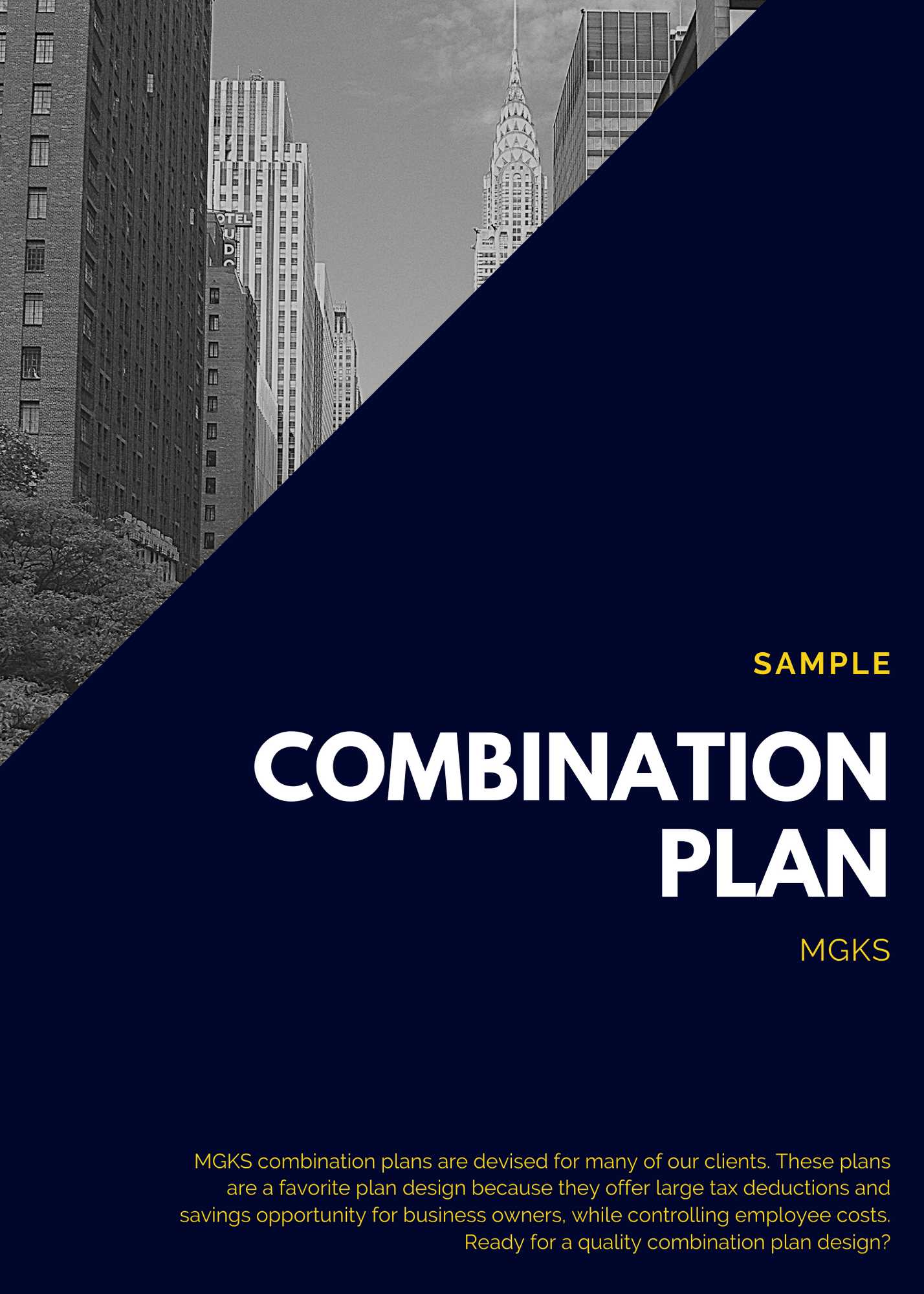Combination Plan
Why A Combination Plan?
Combination plans are designed for businesses in any industry but tend to fit best with professional service organizations or highly profitable businesses with less than 50 employees that have consistent revenue streams year in and year out. They offer large tax deductions and savings opportunities for the owners or principals of your company while controlling and often minimizing employee costs. Ready to see if this is the package for you? Contact us today!
A combination plan design benefits your top performing employees.
Your business can leverage a combination plan to establish additional retirement allocation for top performers & key employees. This allows for many variations of incentives that help you find and retain top employment talent.
Benefits
Increased Contributions
Greatly increase the contribution limits compared to a profit-sharing plan.
Flexibility
By incorporating a combination plan you can offer various retirement opportunities for your employees.
Custom Incentives
Create incentives that will retain high quality talent or give key employees increased benefits.
Plan Options
A well-designed combination plan gives your business many options when it comes to retirement planning.
Sample Combination Plan

Combination Plan FAQs
What is a combination plan (a.k.a. DB-DC combo)?
This is an industry term to describe a creative plan design strategy where two plans, one a Defined Benefit Plan (DB), and the other a Defined Contribution (DC) plan (e.g., 401(k) Profit Sharing, Money Purchase) are sponsored by the same Employer but combined for discrimination testing. This customized design approach often allows for significant contributions to owners or other select staff while maintaining reasonable costs for staff employees who are put in a DC plan (e.g., a 401(k) Profit Sharing plan).
Why would an employer use a DB-DC combo plan approach?
In many cases, but not all, the employer can generate higher contributions for a select group of employee (e.g., owners and/or other select groups) by putting the select group in the DB plan and the remaining staff in the DC plan. The employer contributions to both plans are aggregated for discrimination testing which is performed not on current day contributions, but rather, tested at each participant’s projected retirement age by developing theoretical contributions and benefit accruals payable at retirement age. It involves some future value financial math and conversion to actuarial equivalent benefit accruals on the DC plan and utilizes an opportunity provided in some of the IRS regulations regarding discrimination.
Will this mean that rank-and-file employees are not required to be in the DB plan?
Sometimes it is still necessary to put some of the employees in the DB plan at very modest levels to satisfy Tax Code Section 401(a)(26) requirement that 40% of all eligible employees (those having met the age 21 and typical 1 year of service) have some meaningful benefit under the DB plan. The bulk of the staff contributions are typically made via the DC plan to pass most discrimination testing, so benefits a staff employee gets under a DB plan are usually very modest. In some small employer cases there may be enough owners and other select group members to satisfy the 40% participation requirement without including other staff. In this case, all contributions to employees would be under the DC plan.
Where do we get the authority for utilizing an option to combine different plan types for discrimination testing?
The IRS has issued regulations on how the combined discrimination testing must be performed. The regulations are primarily found under Treasury Reg. 1.401(a)(4)-9. In addition, for an extra User Fee the IRS will review the dual-plan structure along with proposed contributions and benefits and issue a Favorable Determination Letter to the client.
What is the advantage of the DB-DC combo plan to staff employees?
The staff employees primarily understand and appreciate more the DC plan over the DB plan since the DC account balance approach is similar to their personal savings account format. Alternatively, the defined benefit accrued in a DB plan is generally expressed as an annuity payable at a future retirement age and is typically more difficult for the staff to understand and appreciate the benefits offered by the employer.

